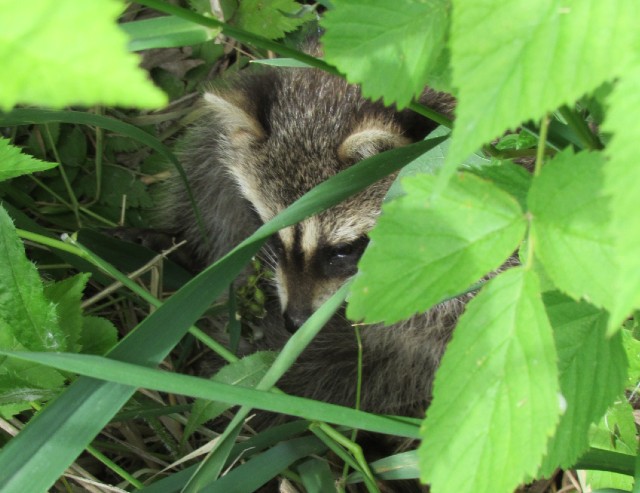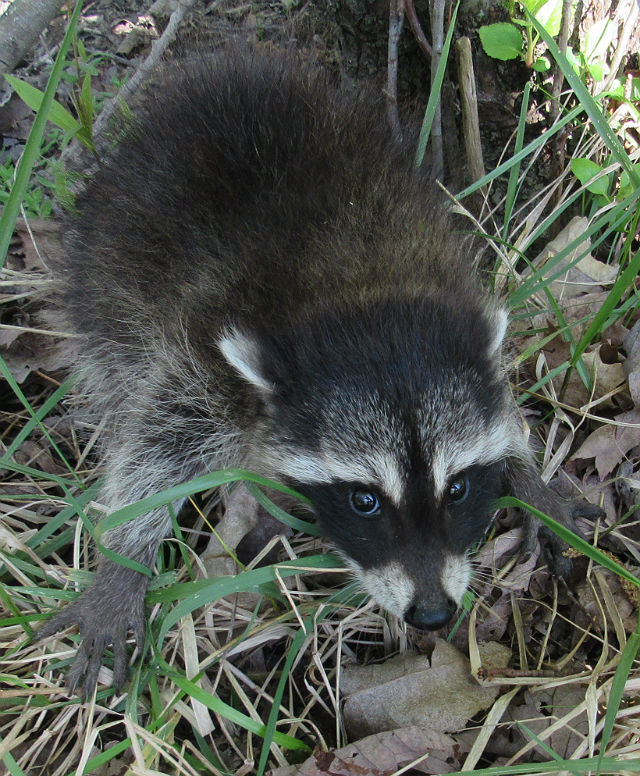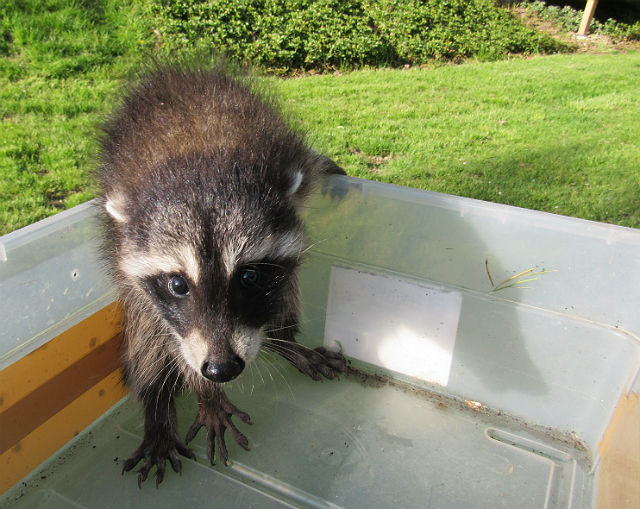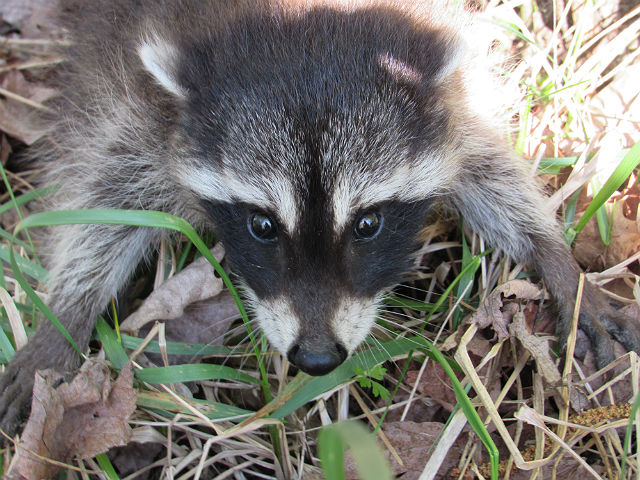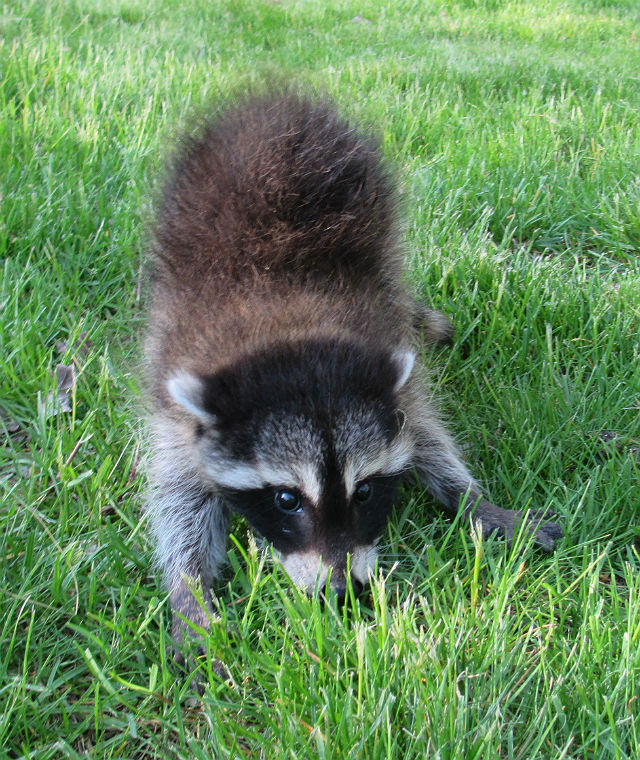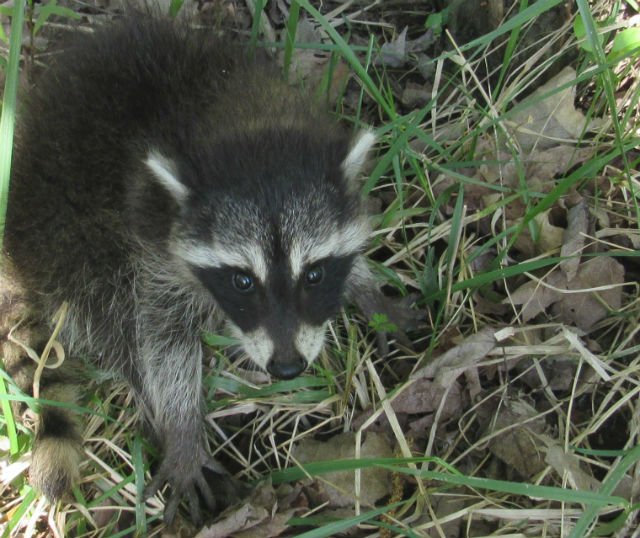This is a common, but interesting creature that often visits our backyard. A highly successful mammal, I often encounter it on my travels as well. Raccoons are found across southern Canada, throughout most of the United States, and into northern South America. Scientifically known as Procyon lotor, Raccoons are commonly associated with washing their food. Their species name, lotor, means “the washer.”
Three of the Raccoon’s most distinctive features are its extremely dexterous front paws, its facial mask, and its ringed tail. It is noted for its intelligence, as studies show that it is able to remember the solution to a task for at least three years.
Raccoons are usually nocturnal and omnivorous, eating about 40% invertebrates, 33% plants, and 27% vertebrates. In the natural world, Raccoons snare a lot of their meals in the water. These nocturnal foragers use lightning-quick paws to grab crayfish, frogs, and other aquatic creatures.
The original habitats of the raccoon are deciduous and mixed forests, but due to their adaptability, they have extended their range to mountainous areas, coastal marshes, and urban areas, where some homeowners consider them to be pests.
During Winter in cold northern climates, Raccoons sleep for extended periods, although they don’t actually hibernate. To prepare for cold Winters, Raccoons pack on extra body fat in fall. This extra fat helps provide the animal with energy when it’s too cold to search for food.
Raccoons live for around one to three years in the wild. In captivity, where the raccoon doesn’t need to contend with finding food or outwitting predators, some have lived as long as 20 years.

